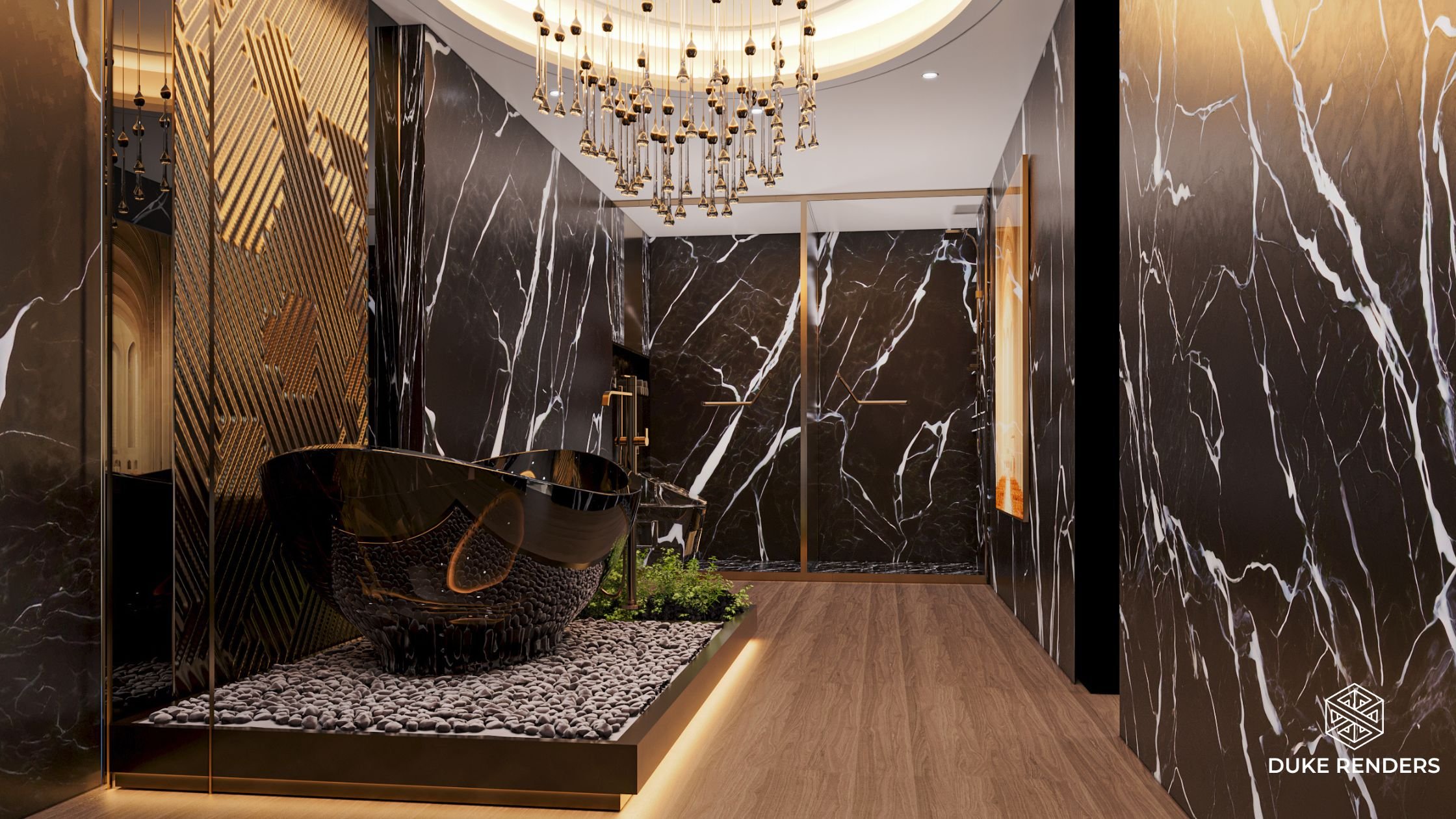The Transformative Power of 3D Renders in Bathroom Design
Introduction
As we move further into the digital age, the integration of technology in various industries has become inevitable. In the field of interior design, one of the most significant advancements is the use of 3D rendering. This technique has particularly revolutionized bathroom design, offering an array of benefits and dramatically influencing the design process. Let's delve into the power of 3D renders in bathroom design and how it contributes to creating stunning, functional spaces.
The Advent of 3D Rendering
3D rendering is a computerized process that generates photorealistic images of architectural and interior spaces. It allows architects, designers, and homeowners to visualize proposed designs in a lifelike, three-dimensional format before construction or renovation begins.
The Power of Visualization
The key benefit of 3D rendering lies in its ability to bring design ideas to life. Unlike traditional 2D plans, 3D renders offer a detailed and realistic view of the space, allowing everyone involved to understand the proposed design better. It empowers designers to experiment with different elements like color schemes, fixtures, and layout options in a risk-free, virtual environment.
Streamlining Design Iterations
3D rendering simplifies the process of making design changes. Traditionally, altering design plans could be time-consuming and expensive. However, with 3D rendering, designers can make quick and efficient modifications to the virtual model. This ability to iterate in real-time contributes to a smoother, more efficient design process.
The Role of 3D Renders in Bathroom Design
The bathroom, often considered a sanctuary within the home, has become a focal point in interior design. Incorporating 3D rendering in bathroom design has numerous advantages, from improving visualization to saving time and costs.
Enhancing Client Presentations
3D renders greatly enhance client presentations. Designers can present their ideas in a visually compelling and realistic manner, making it easier for clients to envision the final result. It also fosters better communication, allowing clients to provide feedback based on the visual representation of the proposed design.
Optimizing Space Utilization
In bathroom design, efficient utilization of space is paramount. 3D renders allow designers to optimize the bathroom layout, taking into account factors like fixture placement, clearance, and accessibility. It enables trial and error with different layouts and fixtures in a virtual environment, ensuring the best use of space.
Material Representation and Coordination
3D rendering accurately represents materials, from tiles and countertops to fixtures and lighting. It allows designers to visualize how different materials will look in the space, considering factors like texture, sheen, and color accuracy. This realistic representation aids in making informed decisions about the materials used in the bathroom.
Elevating Toilet Design with 3D Rendering
Toilet design is a vital aspect of bathroom design, and it greatly benefits from 3D rendering. Whether it's choosing the right fixture or addressing space constraints, 3D rendering provides a comprehensive solution.
Visualizing Fixture Choices
Choosing the right toilet fixture can significantly impact the overall aesthetic and functionality of the bathroom. 3D rendering allows designers to visualize various toilet styles, ensuring that the chosen fixture complements the entire bathroom design.
Addressing Space Constraints
For smaller bathrooms, optimizing space is crucial. 3D rendering helps designers tackle space constraints by experimenting with compact toilet designs, corner installations, or space-saving fixtures. This ensures that even bathrooms with limited space can have a well-designed and functional toilet area.
Material and Color Coordination
Toilet rendering allows for meticulous color and material coordination. Designers can experiment with color schemes, tile patterns, and material finishes to create a cohesive and visually appealing toilet area. The precise material representation in 3D rendering ensures that the chosen elements harmonize seamlessly within the entire bathroom design.
Conclusion
The advent of 3D rendering in bathroom design marks a significant stride in the field of interior design. It not only enhances visualization but also streamlines the design process, saves time and costs, and optimizes space utilization. As technology continues to advance, the role of 3D rendering in shaping aesthetically pleasing and personalized bathrooms is set to become even more prominent in the design landscape.



